by Michael Roberts
The COVID19 pandemic slump has raised poverty across the globe. JP
Morgan economists have tried to measure the increase in poverty using
household income and consumption survey data from the World Bank’s
PovcalNet database. JPM define the poor (or those in deep poverty) as
living on less than $2 per day (which is the ludicrously low World Bank
level); ‘those vulnerable to slipping into poverty’ as living on $2-$10
per day (which is really a better measure of poverty); ‘middle income’
are those living on $10-50 a day (some leeway for a life); and then
‘high-income’ as living on more than $50 per day or about $18,000 a
year.
Before COVID, about half of the 6.5bn people living in the so-called ‘emerging markets’ could be considered ‘middle income’. That means that at least 3bn are in dire poverty (‘economically vulnerable’ or worse).
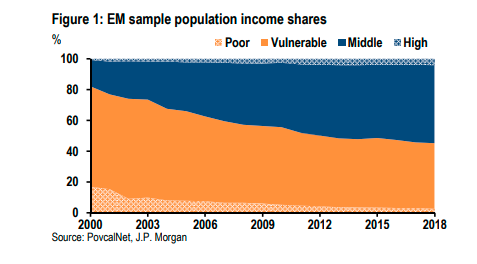
Using these definitions, JPM finds that, during the COVID slump, there was a sharp increase in global poverty. Using the World Bank data, the number in poverty (defined as living on less than US$1.90 per day) increased by 97 million in 2020—the first net increase in global poverty since the Asian Financial Crisis (Figure 3). A separate Pew Research Center study finds that the pandemic pushed 131 million people into poverty. And these poor are not rural peasants, but urban and often educated.
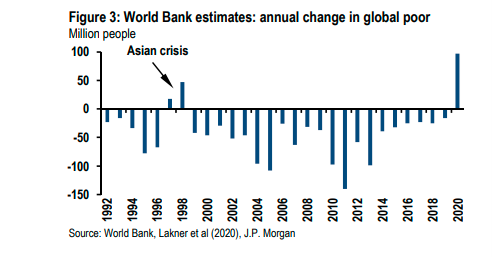
The increase in the poor and the corresponding fall in the ‘middle income’ population varied from country to country. Economies with the deepest contractions in 2020 (such as Peru and Argentina) experienced the greatest declines in the ‘middle income’ group. Overall, it was the ‘vulnerable’ that grew the most (1.9% pts) as a share of the population while middle income share was reduced the most (-1.8% pts).

Some countries avoided the worst. China’s ‘first-in-first-out’ COVID-19 experience did not entirely shield the country from a contraction of the upper and middle classes, but there was only a small expansion of the poorest population, according to Pew estimates.
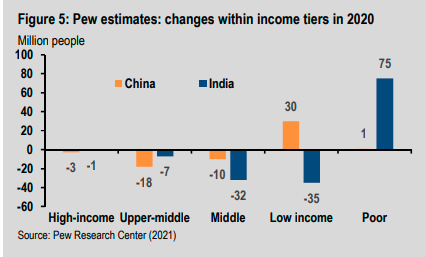
Before the pandemic, Pew estimated that almost 100 million people made up India’s middle-income population in 2020, with a further 22 million in the upper-middle ranks. But the pandemic hit India hard with real GDP contracting 7% in 2020, so the middle and upper-middle populations suffered dramatically (jointly declining by 39 million people—Figure 5). Meanwhile a staggering 75 million people were estimated to have fallen into poverty—accounting for almost 60% of the new global poor. Such was the contrast between the world’s two largest populated countries.
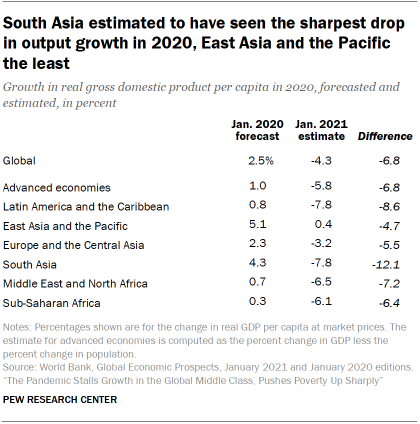
In China, there had been a sizable addition of 247 million people to the middle-income tier from 2011 to 2019. And the upper-middle income population had nearly quadrupled, from 60 million to 234 million. On both fronts, China alone had accounted for the majority of the increase in these tiers globally. Most people in India were in the global low-income tier before the pandemic. – some 1.2 billion people accounting for 30% of the world’s low-income population.
In China, there are now more people in the global middle- and upper-middle income tiers than in poverty and the low-income tier. Although about 10 million people in China are estimated to have fallen out of the middle class in the pandemic downturn, this is a small share of the 504 million who were in the middle class ahead of the pandemic. Likewise, the expansion of the low-income tier in China from 611 million to 641 million or the number of poor from 3 million to 4 million during the pandemic is comparatively modest in number.
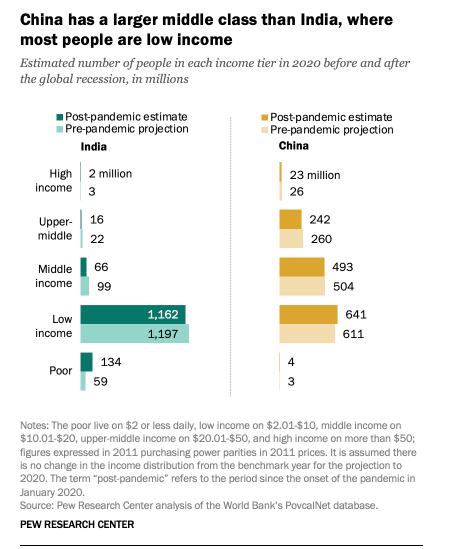
As people fall into deep poverty, they have no funds to support their education and keep them healthy. And that means, apart from suffering other obvious consequences, their productivity falls, damaging the economy as a whole. In Figure 6 we find that China’s investment in education and health per person (PISA score) is high at over 2 standard deviations from the global average and better than any other ‘emerging’ country (even those with higher per capita incomes like Singapore or Korea).
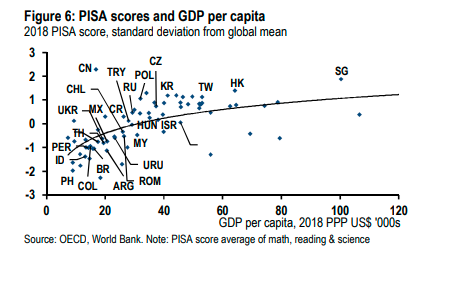
The pandemic has been a disaster for India’s people, driving millions into deep poverty, while the Chinese people have mostly avoided a dip into poverty. Indeed, the Chinese economy has expanded the most among the major economies in the two years since end-2019 and the start of the pandemic – more than four times the expansion in the US and six times that of India. Indeed, most major economies contracted.
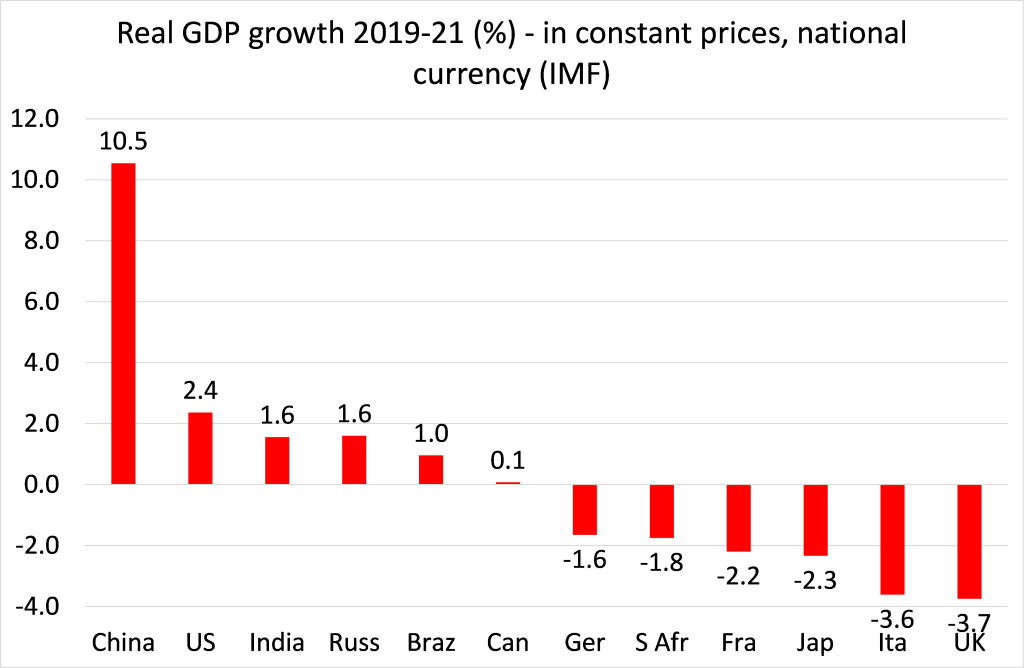
No comments:
Post a Comment